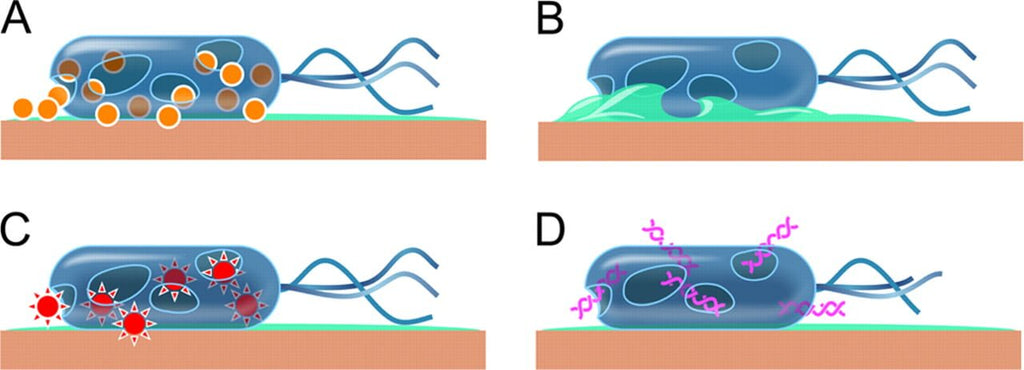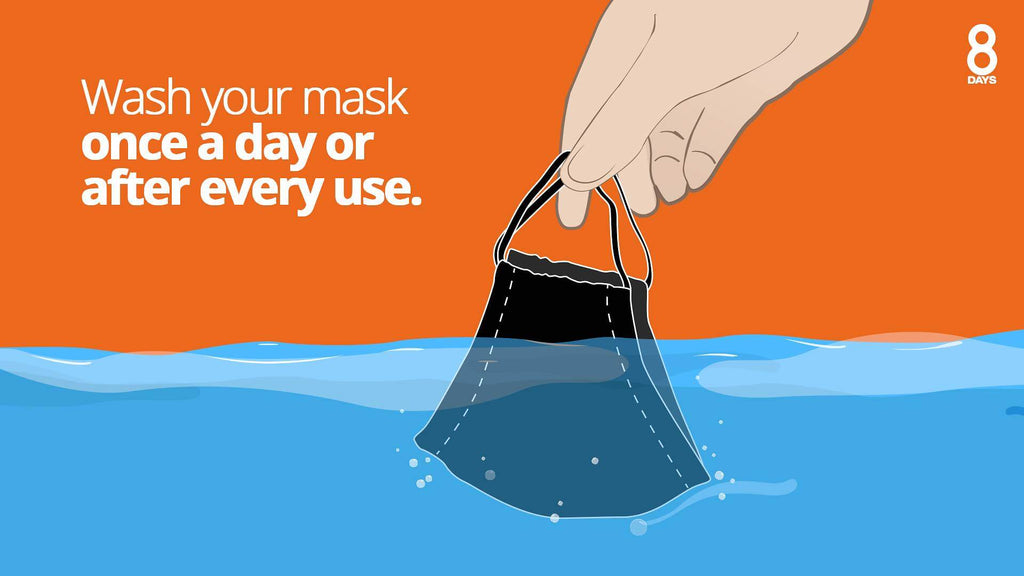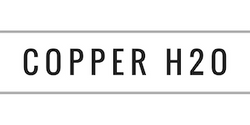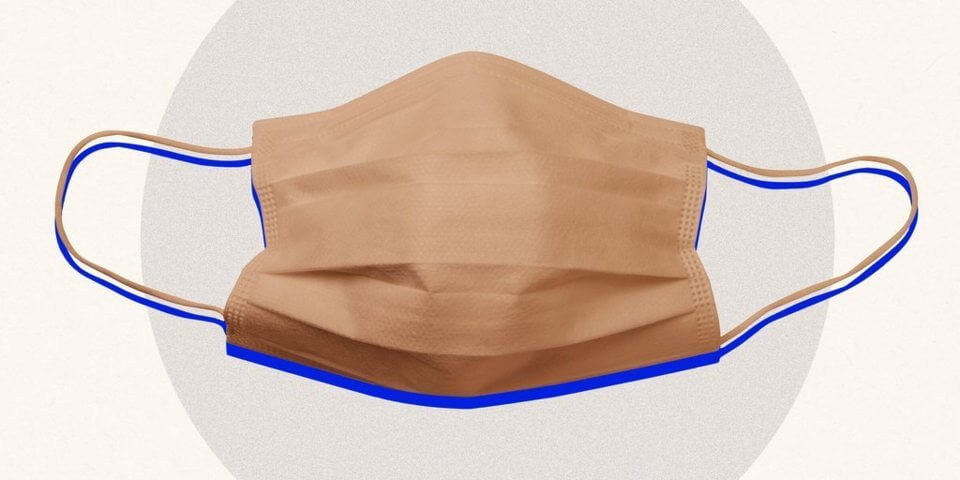Everything you need to know about copper-infused face masks, all in one comprehensive article. Let's dive in!
Introduction
Have you heard of copper masks and are curious about them? Here are some of the most common questions we’ve found online:
What are copper face masks?
What are the advantages of copper masks?
Is it worth buying copper-infused face masks?
If you have questions like these or maybe more, don’t worry—we’ve got you covered! This article will dive in-depth into the world of copper face masks, the science behind them, how to choose the right one for you, and where you can find copper masks for sale. We’ll be going over all the things you need to know about copper masks, so read on!
We’ll be covering the following topics, among others:
- What is a copper-infused face mask?
- Main benefits of using copper face masks
- The science behind copper-infused face masks
- Choosing the right copper face mask for you
- Caring for your copper-infused face masks
- The bottom line on copper masks
What is a Copper-Infused Face Mask?
For thousands of years, humans all across the world have used copper extensively in various fields of medicine, as described in one of our articles. The ancient Egyptians used copper to decontaminate their drinking water; Roman physicians utilized it as a means of cleansing the body of unwanted toxins; and medical researchers in the 20th century used the metal as treatment for various types of diseases like arthritis and fevers. The use of copper in medicine is by no means an exclusively modern concept.
Copper-infused face masks, however, are a relatively new invention. While regulatory bodies are still looking into the efficacy of this product, that hasn’t stopped people from cleaning out stocks of copper masks from stores all around the world.
At this point, you might be wondering: What makes a copper-infused face mask any different from a regular mask? Read on to learn the answer!
Types of Face Masks
There are two types of masks in widespread use today by the public—fabric face masks and medical masks—which both provide some degree of protection. Updated guidelines on the use of these kinds of masks published by the World Health Organization provide an excellent resource to learn more about these in greater detail.
Fabric face masks (made from woven and/or non-woven materials) are typically used to filter out particulate matter like dust. For healthy persons, they are not used as preventative measures since they only provide (very) limited protection against harmful pathogens. Fabric face masks can be provided to infected or potentially infected persons, helping control and prevent further spread of infectious pathogens by blocking their transmission via moisture droplets to healthy people. The benefit of reusability makes it an attractive option, as fabric masks can be washed and cleaned frequently to prevent further contamination of other objects.

Fabric face masks are an acceptable option whenever available especially if social distancing cannot be observed. Remember: they are used mainly to protect others more than you, but they are better than no protection at all.
Medical masks, on the other hand, provide a greater degree of protection against pathogens compared to fabric face masks because of their three-layer construction. The innermost layer is meant to be hydrophilic (water-loving) to absorb moisture coming from you—such as liquid droplets from your mouth and nose—while the outermost layer should be hydrophobic (water-hating) to repel outside moisture from entering your body. The middle layer acts as a filter, providing a barrier that’s difficult for particulate matter (like dust and pollen) and microbes (viruses, bacteria, etc.) to pass through. The filtration efficacy could change depending on the type of medical mask you purchase, with more specialized masks having higher filtration efficiencies.

While offering a much stronger defense against viruses and other microbes than fabric masks, its biggest downside is its lack of reusability. Medical masks are strictly meant to be used once and once only. However, this is still your best bet when it comes to protecting yourself and others against microbes.
Copper-infused face masks have a unique property that sets them apart from every other type: the inherent anti-microbial properties of the metal-infused layer. More than just a barrier, the copper-infused surface can effectively neutralize pathogens that come into contact with the layer after a certain period of time. This is something that both ordinary fabric face masks and medical masks cannot do, as pathogens can remain on their surface for an extended period of time. Copper masks also have the added benefit of reusability, making it an attractive alternative for those already using fabric masks. While they are not a substitute for medical masks, copper face masks offer improved protection compared to your regular fabric face masks.
Main Benefits of Using Copper Face Masks
Copper face masks offer several distinct advantages over fabric masks: strong neutralization of microbes on prolonged contact, a lower risk of contamination from improper use and disposal, and no sacrifice in breathability for added protection. Let’s tackle each of these one by one.
Copper Face Masks Inactivate Microbes Upon Prolonged Contact
As mentioned earlier, copper is an effective deterrent against several types of microbes, such as viruses and bacteria. While we won’t go into the nitty-gritty details of the science in this section, the main thing you need to know is that microbes typically won’t last long on copper-infused surfaces. While this may differ depending on the type of microbe and the quality of the copper face mask, this extra layer of protection adds a remarkable advantage over regular fabric face masks.
Copper Masks Reduce Contamination Risk From Improper Use
While a fabric face mask can protect you while you’re using it, there remains the risk of contamination when you take it off at the end of the day. Imagine: all the particulate matter, viruses, and other microbes remain on the outside of the fabric face mask. If you improperly take off the mask, don’t dispose of it properly, or fail to follow proper cleaning guidelines, you could just as easily contaminate your hands, nose, or mouth. The World Health Organization provides an easy to follow set of guidelines for face mask use and disposal here.
That danger is significantly lessened with copper face masks. Since microbes don’t last long on these types of surfaces, the chances of having any surviving pathogens left on the copper mask are greatly reduced once washed or disposed of. Even then, proper use and disposal of face masks is still essential to minimizing risks, but this extra defense should provide the user some much needed peace of mind during these trying times.
Copper-Infused Masks Do Not Sacrifice Breathability for Protection
What’s usually done to increase the effectiveness of fabric face masks is to add more layers of fabric. While this is great for increasing your personal defense against microbes like viruses and bacteria, it also comes at the cost of another important property: breathability. Aside from reducing the comfort levels of the mask, this could cause a problem over both the short and long term for people with preexisting respiratory problems.
Compared to adding additional layers to fabric face masks, infusing copper to a face mask layer does not significantly affect its physical properties. This means you can gain the extra defense against microbes without having to sacrifice breathability and comfort. If you plan on wearing face masks for extended periods of time, this could be a better option for you compared to fabric masks.
The Science Behind Copper-Infused Face Masks
Now that you know about the main advantages of copper face masks over fabric masks, it’s time to dig deeper into how they work on a scientific level.

Image taken from Grass, Rensing, & Solioz 2011 (Applied and Environmental Microbiology)
The Oligodynamic Effect
This is what gives copper its power against viruses and other microbes. A combination of the Greek words oligos (few) and dynamis (force), the word oligodynamic refers to the action exerted by a small amount of something. In the field of medicine, this often refers to the ability of small quantities of heavy metals—like gold, silver, and copper—to significantly reduce the harmfulness of damaging microorganisms such as viruses and other microbes.
The oligodynamic property of copper has been extensively studied in recent years. While the full mechanism of this effect in copper has yet to be fully understood, several researchers have proposed different pathways as to what happens to microbes when exposed to copper.
Some research suggests that the positively charged copper ions released by the bulk copper metal interact with the negatively charged bacterial cells. Espírito Santo published a study on bacterial killing using copper, describing this process in great detail. As more and more copper ions interact with the cell membrane surface of the bacteria, they start to damage it by initiating several chemical reactions that are harmful to the cell. When exposed to copper, protective membrane barriers in the bacteria start to break down and the cell ultimately disintegrates.
Other studies also suggest that when in contact with copper surfaces, bacterial DNA is rapidly destroyed. Further details on this can be found in a study conducted in 2010 by Warnes to determine how effective copper alloys are on degrading the different types of bacterial DNA in enterococci. They note how a type of bacteria called enterococci is especially tough to neutralize because of its ability to easily develop and transfer resistances. As such, the bacteria is able to live for weeks (even months!) on several common surfaces, such as stainless steel. But, because copper is so effective at targeting the bacterial DNA and disintegrating them quickly, enterococci has a lower chance of adapting quickly enough to develop an effective resistance against the metal.
If you choose to dive deeper into the body of research behind copper’s anti-microbial activity, you’ll find a wealth of additional information. While further research is still needed to determine what happens exactly on a cellular level, researchers can all safely agree that copper is a highly effective tool against microbes like bacteria and viruses, thanks to the oligodynamic effect.
More Copper, More Strength
Typically, the higher the concentration of copper on surfaces, the stronger the anti-microbial effect. Several studies have backed up this claim, with their key points summarized here.
In 2012, Zhu and company published their research which demonstrates how several strains of Salmonella enterica interact with different alloys of varying copper concentrations. They found that as copper content in different metal alloys increased, the inhibiting properties of the material became more potent. In addition, it was discovered that in moist conditions the tested pathogens would last between 30 to 120 minutes, while a dry environment could lower the lifetime of these pathogens to only 10 to 15 minutes.
A study by Pandiyarajan et al. in 2013 focusing on the antibacterial activities of copper (II) oxide nanoflakes also suggests a similar conclusion. Using several strains of bacteria like S. aureus, E. coli, and the like, they found that some strains were more susceptible to damage from exposure to copper. They found that these bacterial strains’ sensitivity is highly dependent on copper concentration, showing the importance of this factor.
The Research on Copper Face Masks
We’ve shown you how effective copper is as an anti-microbial agent, but what actually happens when they’re infused in the fibers of face masks?
A study by Borkow et al., published in 2010, shows how effective copper oxides in respiratory face masks can be against viruses. By incorporating copper oxide particles in N95 face masks at 2.2% weight/weight, they made several interesting discoveries. Compared to normal N95 masks, on which viruses still remained infectious after exposure, the copper-infused N95 face masks were able to readily neutralize the remaining viruses. In practice, this could eliminate viral transmission via face masks.
They also looked at the safety aspect of infusing copper into an N95 face mask at 2.2% weight/weight. By simulating breathing conditions for five hours using the copper-infused N95 face mask, they found that the amount of copper that escaped into the air was far below the USA Occupational Safety and Health Administration’s (OSHA) permissible copper exposure limit. These were also found to be several orders lower than the “lowest observed-adverse-effect-levels” with respect to chronic copper inhalation exposure. In addition, the copper-infused N95 masks were found to not cause any skin irritation with use.
Another study done by Anita et al. (2011) shows how cotton fabric with copper oxide nanoparticles can have improved anti-microbial qualities. They found that by applying these copper nanoparticles on cotton fabric, the anti-bacterial resistance of the fibers were vastly improved. And, while the mechanical properties of the cotton fibers suffered a slight dip after being infused with copper, they were still able to serve their purpose of effectively neutralizing microbial agents. From their wash tests, the researchers also found that anti-microbial resistance dipped by 8% or less after ten washes.
While both studies show that infusing copper into face masks provide strong anti-microbial properties at a safe level for human use, it’s still important to note that these were conducted in a laboratory setting and not in real conditions. Several brands of copper face masks have yet to be studied and approved by regulatory bodies to substantiate the claims of copper mask manufacturers. Keep this in mind if you’re looking to purchase a copper face mask.
Choosing the Right Copper Face Mask for You
With so many options for copper masks available, it’s easy to get overwhelmed. If you’re really looking to invest in protection, buying a high-quality copper-infused face mask would be a much better option as opposed to low-quality knockoffs. Here are the factors you need to consider when selecting a high-quality copper mask best suited for you.
Face Mask Fit
Let’s consider that phrase: “best suited for you.” The better the fit, the better suited something will be for you, and face masks follow the same principle. While copper masks provide an extra degree of protection compared to fabric masks, they are just as vulnerable as fabric masks if they don’t fit you properly. If gaps are present between your face and the mask, even with a copper face mask, you are allowing an easy pathway for microbes to enter your body. This goes both ways—gaps in your face mask allow a route for you to infect other people. This puts both you and others at unnecessary risk.
When buying copper face masks, carefully read the manufacturer’s description to see whether its shape and size are suitable for your use. Make sure that the copper-infused mask has a snug fit with your face that completely covers your nose and mouth. As much as possible, there should be no gaps along the perimeter of the copper face mask.
Number of Layers
Look for a copper face mask with at least three layers: a hydrophilic (water-loving) inner layer to absorb moisture, a hydrophobic (water-hating) outer layer to repel moisture from outside, and a middle filter layer for particulate matter and microbes. Additional layers may be added by the manufacturer for increased comfort or extra filtration, but, at the end of the day, these extra layers should not significantly prevent you from breathing properly in the copper-infused mask.
Type of Material Used
Aside from the number of layers, it is also important to note the kind of materials the copper mask is made of. Some materials are better suited than others for filtration. The World Health Organization’s guidelines on the use of masks provides a good resource in comparing the suitability of different kinds of materials for filtration efficiencies. As a rough guide, spunbond (nonwoven) polypropylene has one of the highest filter quality factors as a material for use in face masks, which is why they’re often used in commercial medical face masks. Avoid materials that are elastic since stretching these could increase pore size, making it easier for moisture to enter and exit the mask.
Amount of Copper Present
As mentioned earlier, higher copper concentrations generally increase the anti-microbial properties of the mask, although further research is still needed to determine the exact quantity to look for. More layers with copper present in the face mask mean a greater chance for microbes to come into contact with the metal. With this in mind, look for copper face mask brands that infuse the copper deep within the fibers (as opposed to copper that’s just sprayed-on) so they can last for several washes.
If you are torn between two copper mask brands that already meet all three of previously mentioned criteria, go for the copper mask with several layers of deeply infused copper in the fibers.

Caring for Your Copper-Infused Face Masks
Because copper face masks are slightly more expensive than your average fabric face mask, it makes sense to take proper care of these copper-infused face masks as this is essential to prolonging their serviceable lifetime. Here are some general instructions to make the most out of your copper masks. Because the materials in each copper face mask are unique to their brand, be sure to refer to the manufacturer’s instructions for mask maintenance.
While copper is a great anti-microbial material, it isn’t completely foolproof, so always assume that copper masks are contaminated once they have been worn. The general rule of thumb is to wash your copper face masks at least once a week, preferably after every time you wear it, in the same manner you would with regular clothes. If the manufacturer’s instructions allow it, use high temperature water to clean your copper mask. Allow them to dry completely; do not use them if they are still wet or damp as this can resist airflow and inhibit the anti-microbial properties of copper masks. When they are not in use, be sure to store your copper masks in a clean and dry place as a warm and humid environment could promote the growth of microbes.
There is a possibility that copper particles could be removed from the face mask during the washing process. As such, we recommend investing in a high-quality mask which has several layers of deeply infused copper in the fibers. This ensures that little to no copper particles escape the face mask during the washing cycle.
The Bottom Line on Copper Masks
To summarize: copper has been used extensively in medicine due to its inherent anti-microbial properties, making it an effective deterrent to pathogens. The reason why they’re so effective is the oligodynamic effect of copper, which inactivates bacteria and viruses. As such, microbes last for a significantly shorter period of time on copper surfaces compared to other materials.
Copper-infused face masks offer several distinct advantages over commonly-used fabric masks—they neutralize microbes on prolonged contact, have a lower risk of contamination from improper use & disposal, and they do not sacrifice breathability for added protection. If you choose to invest in copper face masks, you need to take into account several factors to make sure you choose the right one for you: the fit of the mask, the number of layers present, the type of material used, as well as the amount of copper present. We also provided some general instructions to help you properly care for your copper-infused face mask, such as washing them frequently and consistently—daily after every use is best, subject to your manufacturer’s instructions!
It is important to remember that while copper face masks provide a great layer of defense against pathogens, they are only one part of a complete solution to protecting yourself against viruses and other microbes. There’s still no substitute for personal hygiene practices—proper handwashing techniques, frequent use of hand sanitizers, and refraining from touching our eyes, nose, and mouth.
About the Authors: This article was collaboratively written by our team of researchers and writers with the benefit of all available scientific studies and other relevant literature. Our team of researchers and writers include experienced health researchers including a qualified medical professional. Please note that information in this article is not intended or implied to be a substitute for professional medical advice, diagnosis or treatment.
Did You Enjoy This Article?
Thank you for reading! If you enjoyed this article, you might also like the following articles: Copper Bracelets: Complete Guide and Copper Vessels: Ultimate Guide


Leave a comment: